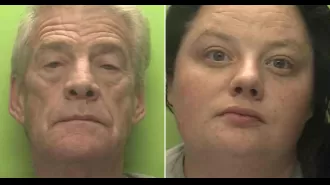Ucas opening time for A level results and clearing process today, find out how to check your results and go through clearing.
A stressful period.
August 15th 2024.

It's that time of year again - A level results day. The anticipation and anxiety leading up to this day can be overwhelming. After months of intense studying, endless cue cards, and the constant worry of exams, the moment of truth finally arrives when you hold that envelope in your hands.
No matter what your plans are post-graduation, whether it's attending university or pursuing other opportunities, the hope remains the same - that your hard work will be reflected in the grades on that piece of paper.
For those aspiring for higher education, the pressure can be even greater as they wait nervously to see if their grades are enough to secure a spot at their dream university. However, if the results don't quite meet expectations, all hope is not lost. There are still plenty of options available, including the clearing process.
So, how exactly does it all work? Let's break it down.
First things first, what time does Ucas open on results day? The Ucas Hub will be accessible at 8am on Thursday, 15 August. All you need to do is log in with your existing details and check the status of your application. You will also receive an email from the admissions office, confirming whether you have been accepted into your chosen university and providing further guidance.
Now, let's talk about how to actually get your results. While Ucas will notify you about your university application, your A level results will be issued directly by your college or sixth form. It's always a good idea to check with your institution beforehand, but most colleges will distribute results in person at 8am. In case you are unable to collect them in person, make sure to contact your college to make arrangements for someone to pick them up on your behalf.
When heading to collect your results, don't forget to bring your Ucas number, which can be found on the Hub and on previous communications you have received. If you are considering the clearing process, you will also need your Clearing number, which can also be found on the Hub or in the email from Ucas. And lastly, if you do end up in Clearing, you will need to have your A level results on hand.
Now, let's talk about the process of clearing. Clearing is a way for universities to fill any remaining spots in their courses. While the majority of students do get accepted into their first choice university, there are many who don't receive the results they had hoped for or simply have a change of heart after opening that envelope. If you fall into any of these categories, don't worry - you can still land a spot at a great university through Clearing.
To be eligible for Clearing, you must fall into one of the following categories: you didn't receive any offers, you received offers but chose not to accept them, you didn't meet the conditions of your offer, you paid the multiple choice application fee, you declined your firm place, or you applied after 30 June. To find available places, use the Ucas search tool and once you find a course and university that interests you, give them a call to confirm availability and if you meet the requirements. Then, you can click the 'add Clearing choice' button on the website and fill out the application form. Just make sure to complete this process by the deadline set by the university. Keep in mind that you can only add one option at a time, but if your application is unsuccessful, you can try again with a different university.
An alternate option is to use Clearing Plus, which helps match you with available courses based on your grades, previously selected courses and universities, and the requirements set by the university.
But what if you want to challenge your results? In this case, your college or sixth form can help you contact the relevant exam board to request a review of your exam marking. Private candidates can also contact the exam board directly. However, keep in mind that there may be a fee if your grade isn't changed as a result of the appeal. The deadline for the appeals process varies, so make sure to check with the exam board directly to avoid missing out.
If you don't get your first choice, it can be disheartening. The University of Stirling's student recruitment officer, Gemma Connell, has shared some useful tips on how to cope with Clearing and unexpected results. First, don't panic. You are not alone in this process and there are still options available. Prepare by checking for vacancies on your desired courses, visiting university websites for more information on Clearing, and getting ready to call the Clearing helplines. Make sure to have your Ucas personal ID number, results, and personal statement on hand before calling each university. And don't be afraid to ask questions - this is a big decision and you should have all the information you need before accepting an offer.
In the end, whether you end up at your first choice university or through the clearing process, remember that your hard work and determination will lead you to success. And if things don't go as planned, there are always alternative paths to reach your goals. Good luck!
No matter what your plans are post-graduation, whether it's attending university or pursuing other opportunities, the hope remains the same - that your hard work will be reflected in the grades on that piece of paper.
For those aspiring for higher education, the pressure can be even greater as they wait nervously to see if their grades are enough to secure a spot at their dream university. However, if the results don't quite meet expectations, all hope is not lost. There are still plenty of options available, including the clearing process.
So, how exactly does it all work? Let's break it down.
First things first, what time does Ucas open on results day? The Ucas Hub will be accessible at 8am on Thursday, 15 August. All you need to do is log in with your existing details and check the status of your application. You will also receive an email from the admissions office, confirming whether you have been accepted into your chosen university and providing further guidance.
Now, let's talk about how to actually get your results. While Ucas will notify you about your university application, your A level results will be issued directly by your college or sixth form. It's always a good idea to check with your institution beforehand, but most colleges will distribute results in person at 8am. In case you are unable to collect them in person, make sure to contact your college to make arrangements for someone to pick them up on your behalf.
When heading to collect your results, don't forget to bring your Ucas number, which can be found on the Hub and on previous communications you have received. If you are considering the clearing process, you will also need your Clearing number, which can also be found on the Hub or in the email from Ucas. And lastly, if you do end up in Clearing, you will need to have your A level results on hand.
Now, let's talk about the process of clearing. Clearing is a way for universities to fill any remaining spots in their courses. While the majority of students do get accepted into their first choice university, there are many who don't receive the results they had hoped for or simply have a change of heart after opening that envelope. If you fall into any of these categories, don't worry - you can still land a spot at a great university through Clearing.
To be eligible for Clearing, you must fall into one of the following categories: you didn't receive any offers, you received offers but chose not to accept them, you didn't meet the conditions of your offer, you paid the multiple choice application fee, you declined your firm place, or you applied after 30 June. To find available places, use the Ucas search tool and once you find a course and university that interests you, give them a call to confirm availability and if you meet the requirements. Then, you can click the 'add Clearing choice' button on the website and fill out the application form. Just make sure to complete this process by the deadline set by the university. Keep in mind that you can only add one option at a time, but if your application is unsuccessful, you can try again with a different university.
An alternate option is to use Clearing Plus, which helps match you with available courses based on your grades, previously selected courses and universities, and the requirements set by the university.
But what if you want to challenge your results? In this case, your college or sixth form can help you contact the relevant exam board to request a review of your exam marking. Private candidates can also contact the exam board directly. However, keep in mind that there may be a fee if your grade isn't changed as a result of the appeal. The deadline for the appeals process varies, so make sure to check with the exam board directly to avoid missing out.
If you don't get your first choice, it can be disheartening. The University of Stirling's student recruitment officer, Gemma Connell, has shared some useful tips on how to cope with Clearing and unexpected results. First, don't panic. You are not alone in this process and there are still options available. Prepare by checking for vacancies on your desired courses, visiting university websites for more information on Clearing, and getting ready to call the Clearing helplines. Make sure to have your Ucas personal ID number, results, and personal statement on hand before calling each university. And don't be afraid to ask questions - this is a big decision and you should have all the information you need before accepting an offer.
In the end, whether you end up at your first choice university or through the clearing process, remember that your hard work and determination will lead you to success. And if things don't go as planned, there are always alternative paths to reach your goals. Good luck!
[This article has been trending online recently and has been generated with AI. Your feed is customized.]
[Generative AI is experimental.]
0
0
Submit Comment





